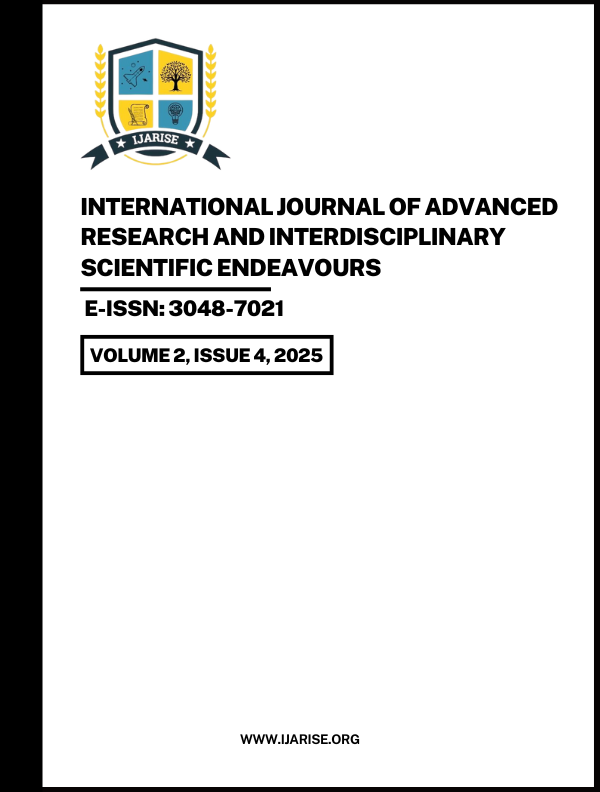Published 2025-04-30
Keywords
- Underwater Image Enhancement,
- U-Net GAN,
- Deep Learning,
- Generative Adversarial Networks,
- Image Restoration
How to Cite
Copyright (c) 2025 International Journal of Advanced Research and Interdisciplinary Scientific Endeavours

This work is licensed under a Creative Commons Attribution 4.0 International License.
Abstract
Underwater images often suffer from low contrast, color distortion, and noise due to light absorption and scattering in water. These issues make it challenging for marine applications such as underwater exploration, object detection, and autonomous navigation. Traditional image enhancement techniques struggle to recover natural colors and details effectively. This research proposes a U-Net-based Generative Adversarial Network (U-Net GAN) to enhance underwater images, focusing on preserving structural details while improving visual quality. The U-Net architecture ensures effective feature extraction and segmentation, while the GAN framework enhances image realism by learning high-level transformations. The model is trained and tested on benchmark datasets such as UIEB and EUVP, with performance evaluated using PSNR (Peak Signal-to-Noise Ratio), SSIM (Structural Similarity Index), and UIQM (Underwater Image Quality Measure). Experimental results demonstrate that the proposed approach significantly enhances underwater images compared to conventional methods, restoring natural colors and improving visibility. This study contributes to advancing deep learning techniques for real-time underwater image enhancement, benefiting various marine research and surveillance applications.

